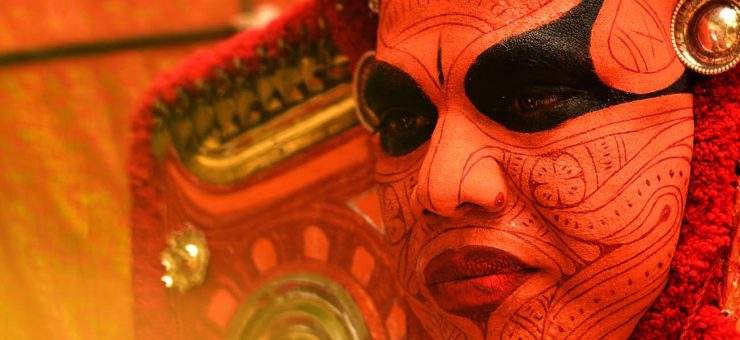Indian Dances have been function of man’s life, even from the primitive to the most cultured community. Perhaps, before man began to speak and to paint, he began to dance. While the culture dance for pleasure and for the expression art.
India, with its vast variety of races and conditions has been a veritable treasure house of dance forms for untold centuries. Most of the prevailing systems of Indian classical dancing which are governed by elaborated techniques and shown high degree of refinement, have had their origin in the dances of the common people, which still survive in as virile state as ever in tribal hamlets and peasant hits.
Some of the Indian Classical Dances are as follows:
Bharatnatyam Classical Dance
Bharatnatyam one of the various forms of classical dance in India. Bharatnatyam is believed to be the oldest, because it is the form which is based on the largest extent, on ancient texts on the dance. For centuries it was danced by Devadasis in the temples of the south India. Movement, mime and music contribute in equal measures to this beautiful dance form Tamil Nadu. It is a solo, feminine dance which is devotional in spirit highly stylized and sophisticated in its technique, Bharatnatyam is evenly divided between nritta, pure dance, and nritya, expressional compositions.
Kathak Classical Dance
A major style of the north, Kathak, unlike Bharatnatyam, has traditionally been danced both by men and women. The Kathak we know today is a synthesis of two streams, the sacred and the secular. It is conceded to have evolved from the simple, devotional mimetic reaction of the Kathakar (story-teller) who were storytellers and rhapsodists attached to temples in the Braj region of Uttar Pradesh the Mathura Vrindavan area where Lord Krishna is believed to have been born.
Kathakali Dance
Most important of the Indian dance-drama styles is Kathakali from Kerala. This is a form of dance-drama, a performance of which when presented in the traditional manner, lasts all night. The stories of Kathakali are taken mostly from the celebrated epics, the Ramayana and the Mahabhart.
Manipuri Dance
In the north-east of India, surrounded by undulating hills, is the beautiful valley of Manipur. The Principal items in the Manipuri repertoire are the Ras dances, of which there are four main types, all of which pertain to Krishna and are performed only by women and girls. Lyrical grace, lightness of tread and delicacy of hand gestures set Manipuri apart from the geometric structure of Bharatnatyam and the linear quality of Kathak. The costumes and ornaments in Ras are colourful and glittering.
Odissi Dance
Orissa, on the eastern sea coast, is the home of the highly sensuous and lyrical form known as Odissi. Like Bharatnatyam, it was intended to be performed in temples as a religious offering. It has an intensive emotional and lyrical structure and consists of literary compositions of the Krishna theme, the staple being the 12th century poem Geet Govinda by Jaidev. Nritta, pure dance and nritya, expressional dance are evenly balanced in a recital. Odissi throbs with motifs reflecting sculpture design. inspired by temple carvings, its poses are statuesque yet vibrant, casting an everlasting spell.
Indian Folk Dances
The Indian folk dances is simple without being naive, for behind its simplicity lie both profanity conception and a directness of expression which are of great artistic value.
Generally people nourish a wrong notion as to the word ‘FOLK’ and mean that folk art is village art bur folk comprises the common people, both inhabiting in the urban and the rural areas, and so folk art is a common man’s art.
Indian folk and tribal dances ranges from simple, joyous celebration of the seasons, of the harvest, or the birth of a child to ritualistic dances to propitiate demons and invoke spirits. There are dances involving balancing tricks with pitchers full of water, or jugglery with knives.
There are literally hundreds of Indian folk and tribal dances as each ethnolinguistic group-and there are several in every region of India-has its own stock of dances. The dances by masked lamas in Ladakh, Sikkim and Darjeeling and slow tempo and simulate combat between good and evil spirits. From the picturesque valley of Kashmir hail Rauf, a seasonal dance in which dancers link their arms and glide forward and backward. The Kud dance of Jammu exhibits swaying, sinuous movements.
